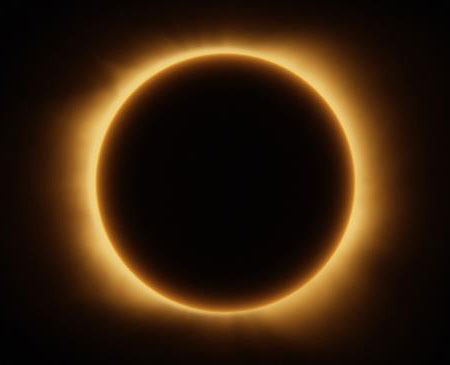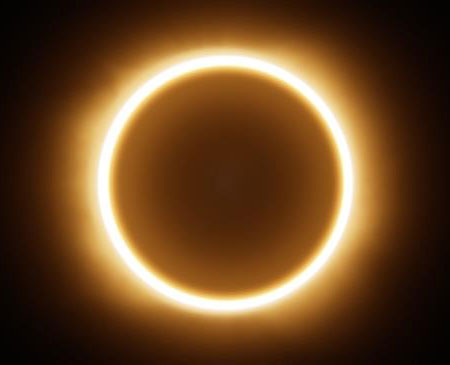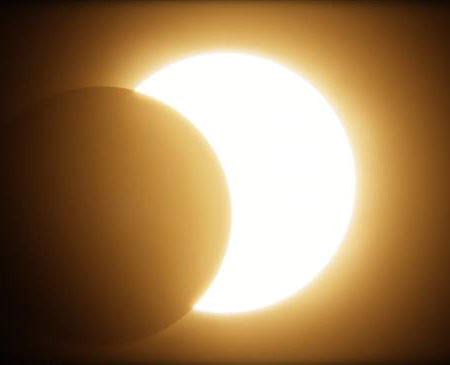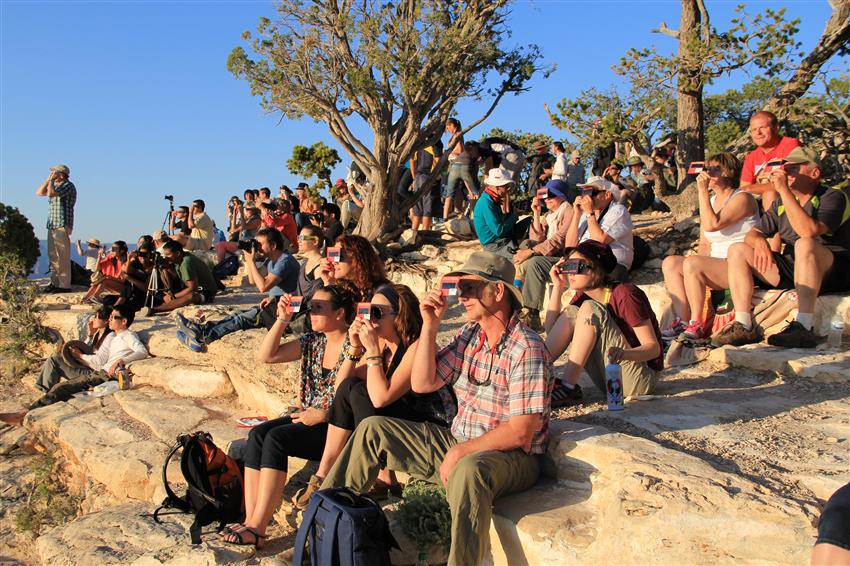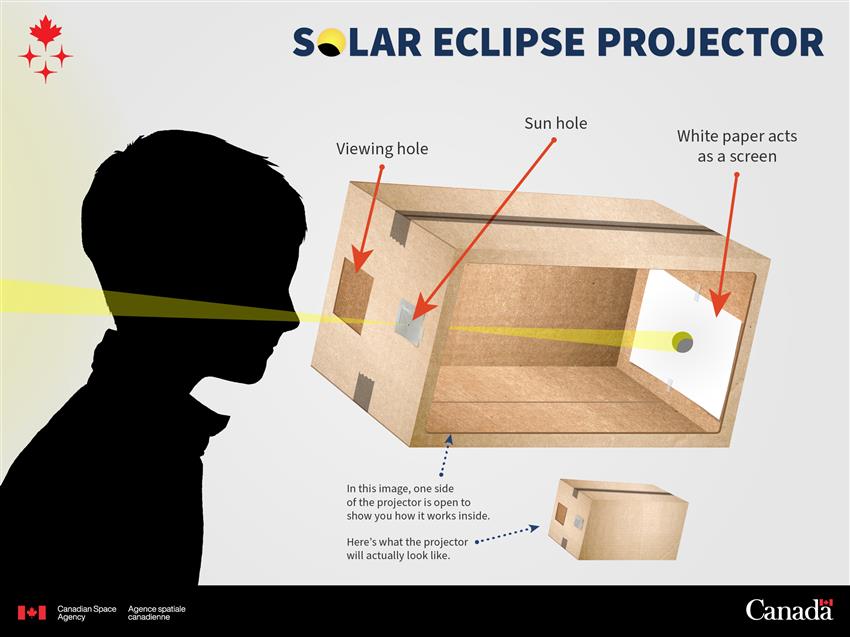Your guide to solar eclipses
Very important! Looking directly at the Sun, without appropriate protection, can lead to serious problems such as partial or complete loss of eyesight.
An eclipse is a wonder to behold. Although eclipses occur more often than you might think, there aren't many opportunities to admire them. There are four to seven solar or lunar eclipses per year, but only those people along the path of an eclipse are able to see it.
What is an eclipse?
An eclipse occurs when the light of a body outside Earth's atmosphere (Sun, Moon, planets, etc.) is temporarily blocked by another body. Eclipses don't just happen on Earth: they also take place on other planets, like Jupiter and Neptune.
What is a solar eclipse?
A solar eclipse occurs when the Moon comes between Earth and the Sun, casting a shadow on Earth.
This animation partially shows the solar eclipse on , with the Moon hiding the Sun and casting its shadow on Earth. Animation created with WorldWide Telescope. (Credits: CSA, WorldWide Telescope)
From the locations along the Moon's umbra trajectory, it appears as if the Sun has gone dark. Depending on the distance between the Sun and the Moon and their positions, it is possible to see three kinds of solar eclipses:
- Total eclipse: the Moon completely covers the Sun
- Annular eclipse: the Moon is closer to the Sun; hence the Moon appears smaller than the Sun. A ring of light from the Sun is always visible
- Partial eclipse: the Sun and the Moon are not perfectly aligned, so only a part of the Sun is hidden by the Moon
Total solar eclipse of
On , a total solar eclipse unfolded over eastern Canada.
Timelapse footage of the total solar eclipse from CSA headquarters. (Credit: CSA)
When will the next total solar eclipse be visible in Canada?
The next total solar eclipse to be visible in Canada will occur on .
Partial solar eclipse of
On , a partial solar eclipse will be visible in eastern Canada.
Annular solar eclipse. (Credit: CSA)
How to safely watch a solar eclipse
During any solar eclipse, it is imperative to wear special glasses with filters designed for eclipse watching (ISO 12312-2 international standard) to prevent eye damage. Regular sunglasses will not protect your eyes sufficiently.
Learn about safe practices for observing a solar eclipse. (Credits: CSA, NASA)
During a total solar eclipse, when the Sun is completely covered by the Moon for a short period of time (between 2 and 3 minutes), the shadow cast by the Moon follows a corridor about 110 to 115 km wide. This is the most spectacular part of the eclipse, as those who are lucky enough to be in this corridor are able to see the Sun's corona, the chromosphere, prominences and streamers. Proper eye protection is essential before and after totality.
For those outside the path of totality, the Sun appears to be partially covered by the Moon (partial eclipse). When watching a partial solar eclipse, proper eye protection is required at all times.
If you don't have special glasses designed for eclipse watching, there are other ways to watch an eclipse, such as an eclipse projector, which you can easily learn how to make.

